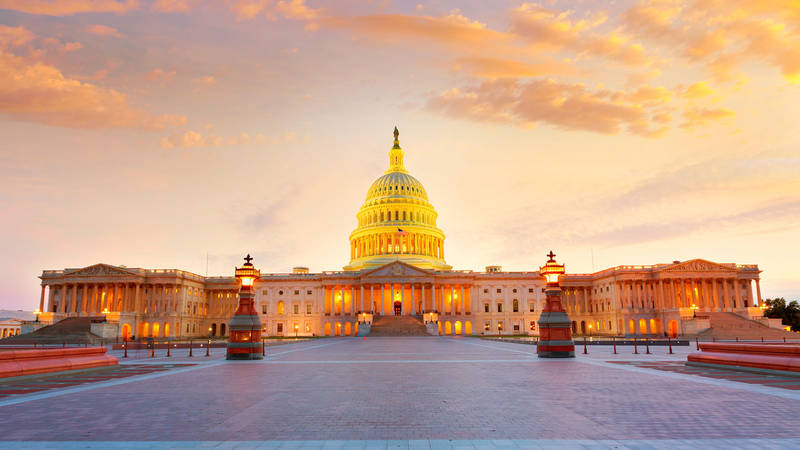NPCA examines the administration’s budget proposal released earlier this month and shares what we see as its pros and cons.
Every year, the president of the United States is required by law to send a budget proposal to Congress. These requests provide a blueprint of the administration’s goals, outlining a vision for the country. While the president can push his priorities and set a tone for U.S. values, Congress ultimately holds the authority to determine how much of an investment the National Park Service gets.
For decades, the National Parks Conservation Association (NPCA) and our members and supporters have fought for greater funding for our national parks to ensure they have the staffing and resources they need to protect our most treasured landscapes and irreplaceable cultural and historic artifacts. And while the Biden administration’s most recent budget request doesn’t fully meet the needs of our national parks, it stands in stark contrast to the funding cuts enacted by Congress in its fiscal year 2024 spending bill.
This president’s $3.6 billion budget proposal for the Park Service is not perfect. It only scratches the surface of the investments our national parks need and deserve. But the message it sends is clear: Our national parks and the communities that rely on them matter.
Here are what NPCA sees as some pros and cons of the president’s budget for national parks:
Pros
Increases park funding and staffing
President Biden’s budget calls on Congress to provide a funding increase of $199 million to Park Service operations, a 6.8% boost beyond the spending bill Congress recently enacted. This investment would help bring staff back to parks across the country, as well as improve and modernize visitor experiences, reduce the impacts of climate change and help preserve the full American story.
Park visitation has skyrocketed over the years, but our parks continue to struggle with underfunding and understaffing. Between 2012 and 2022, national parks staffing eroded by 13% while visitation grew by 10%. Vacant staff positions have gone unfilled, while overwhelmed park staff are left assuming multiple roles, doing whatever is needed to protect parks and their resources. At the same time, parks are experiencing record numbers of visitors every year — including more than 325 million recreational visits last year alone.
Between 2012 and 2022, national parks staffing eroded by 13% while visitation grew by 10%.
While the president’s proposed increases would return more than 100 personnel to parks and supporting offices, the Park Service currently has more than 2,000 fewer staff than it did in 2011. This increase isn’t enough to bring staffing levels back to where they were, let alone where they should be now. Parks, visitors and the people who dedicate their careers to protecting our most treasured places deserve better.
Strengthens parks against impacts of climate change
From day one, the Biden administration set needed goals to address climate change and reduce air and water pollution. The president’s most recent budget demonstrates this commitment.
The president’s budget includes an increase of $2.5 million for projects to prepare parks for the effects of a changing climate, such as controlling invasive species, restoring ecosystems, and tackling threats to endangered and threatened plants and animals. The president also proposes $250,000 in dedicated funding for nature-based solution experts, who would work to improve flood resiliency, water quality, biodiversity, connected habitats, and the capture and storing of carbon in grasslands, forest and oceans. These evidence-based efforts would strengthen communities and natural resources against climate threats.
Over the last few years, record floods, catastrophic wildfires and powerful hurricanes have devastated many national parks, jeopardizing the local economies they support and the landscapes, infrastructure, historic structures and cultural artifacts they protect. Since August 2022, Inflation Reduction Act (IRA) funding has helped parks curb climate change impacts.
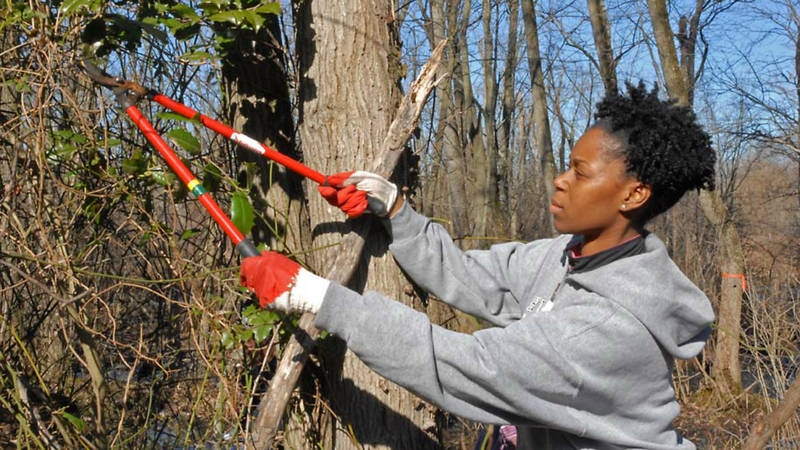
Volunteer helps remove invasives at Kenilworth.
NPCAHowever, we know there are twice as many projects in parks than what the IRA can fund. It’s clear that parks need sustained funding to prepare for the future, and a bipartisan majority (79%) of the American public support funding the Park Service to rebuild parks with green infrastructure so parks can be accessible and enjoyable for visitors.
While the president’s budget proposal doesn’t slow or stop progress, it doesn’t increase the speed we need to prepare parks for climate change. Our lawmakers must do more to provide parks and communities with the resources necessary to prepare and protect them for generations to come.
Supports Tribal collaboration
The Biden administration’s proposed budget affirms his pledge to elevate and engage underrepresented communities, providing more opportunities for Tribal Nations and key stakeholders to shape the direction of land management activities.
The president’s budget includes a $3 million investment to expand collaboration with Tribes in co-stewardship of national park resources, such as engaging Tribal representatives in the management of California condors at Pinnacles National Park.
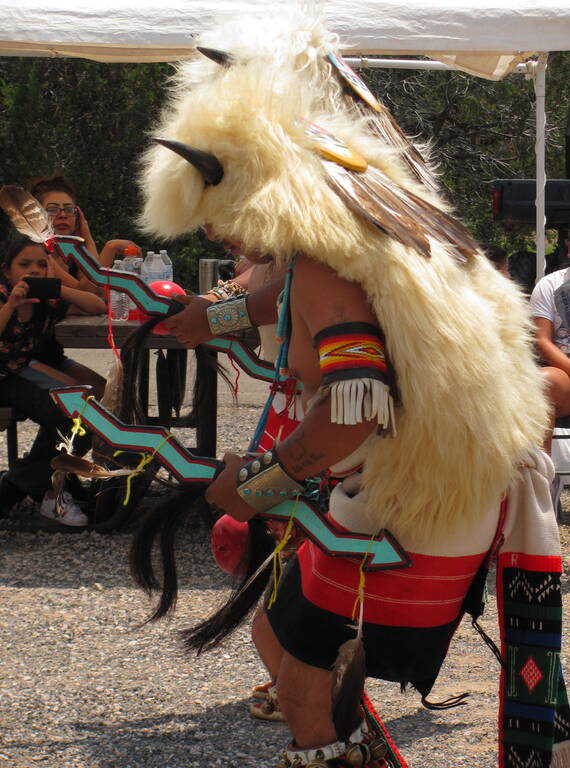
A man wearing a white buffalo hide and holding turquoise lightning bolts dances at an Ancestral Lands Day celebration at El Morro National Monument.
NPSOther proposals would help address long-standing disparities and better support Indigenous communities, including a $1.5 million investment to implement the Native American Tourism and Improving Visitor Experience (NATIVE) Act and shape a more inclusive travel and tourism strategy to benefit Tribes. And through additional funding for Tribal liaisons at numerous national parks, staff would be able to utilize Indigenous knowledge and input to better preserve culturally important places and ecosystems while also balancing recreational opportunities.
Public lands sit on ancestral lands and hold thousands of years’ worth of Native American history and culture. By strengthening Tribal collaboration in the management of our public lands, we all benefit, as do our national parks and public lands.
Empowers new parks and their undertold stories
To strengthen our national parks, it’s vital that everyone sees themselves reflected in these landscapes. Ensuring equitable access is key to the future of our nation’s vast system of public lands and waters, especially for those who have historically been excluded or have felt unwelcome.
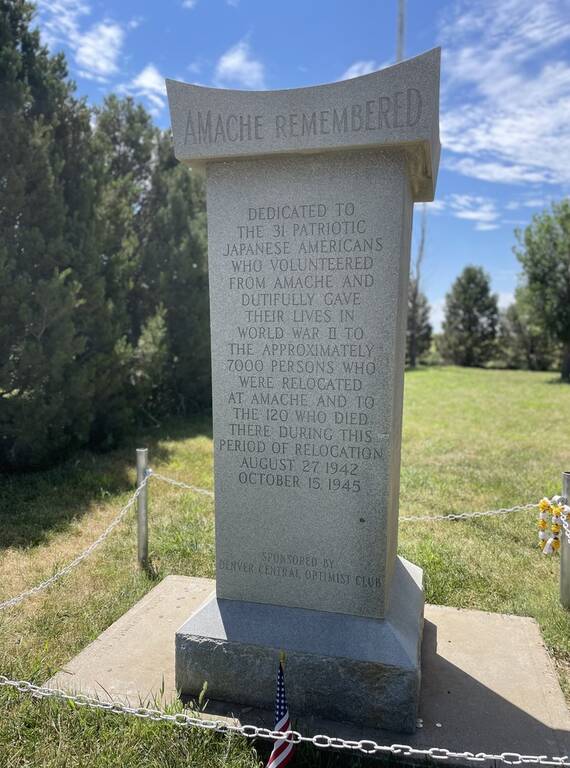
A memorial at the Amache National Historic Site in Colorado honors those who died at the incarceration site and during World War II.
NPSThe president’s budget calls for a much-needed $3 million investment to help with startup costs at some of our newest national park sites, including Emmett Till and Mamie Till-Mobley National Monument and Blackwell School and Amache national historic sites.
This funding would help broaden the protection and interpretation efforts at these and other sites across the country that tell important stories of our shared national narrative.
Additionally, a $3 million proposal to establish the African American Burial Grounds Preservation Program would provide grants for identification, research, documentation, interpretation and preservation of African American burial grounds across the country that are or at risk of being damaged or destroyed.
As our country continues to evolve and honor more of its shared history, so too must our national parks and the stories they tell.
Cons
Cuts historic preservation
Every one of America’s more than 420 national parks preserves an important piece of our collective history and culture. Our parks tell the stories of our country’s determination, successes and injustices that we must continue to share and learn from. But funding and staffing shortfalls have made it difficult for parks to effectively and impactfully manage, preserve and interpret these stories.
On the positive side, the president’s proposal includes a 7% funding increase over 2023 for the management of cultural resources, which supports staff such as historians, archivists, curators and other professionals who are critical to preserving our nation’s foundational stories.
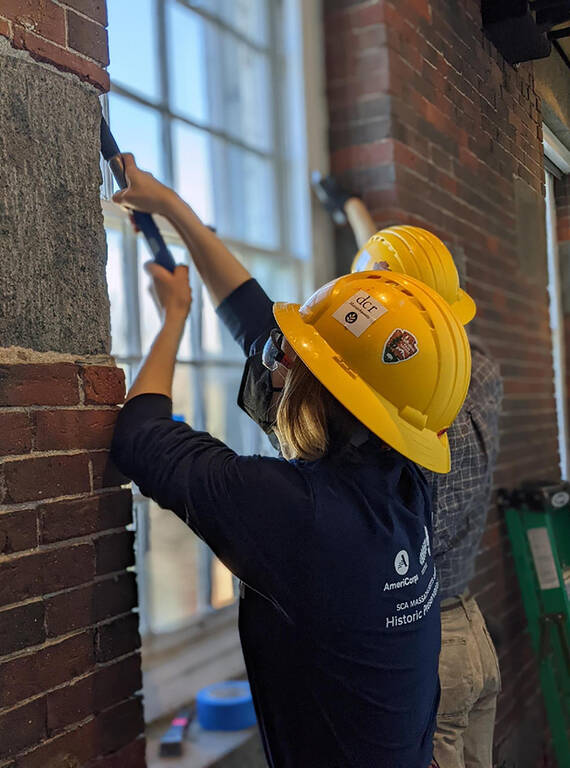
Historic Preservation Corps members work on historic windows at Boston African American National Historic Site.
NPSUnfortunately, it also substantially cuts Park Service programs that support historic preservation of places and events that are crucial to our shared history. The budget includes a $37 million cut (18%) to the Historic Preservation Fund, which provides grants to states and Tribes to support historic preservation efforts in communities across the country.
It also proposes a $11 million cut (38%) to the Heritage Partnership program that aids national heritage areas, corridors and districts in the protection and interpretation our history, while also bolstering heritage tourism and supporting local economies. We can’t expect these programs to properly safeguard our nation’s most important places, artifacts and stories with cuts like these.
Disregards the growing backlog of park repair needs
The backlog of repair needs at national parks across the country continues to climb, now having reached more than $23 billion. These infrastructure needs impact visitor access and safety and park resources, and threaten to undermine the livelihood of local economies that depend on well-run parks.
Through 2025, funding from the historic Great American Outdoors Act (GAOA) will address as much as a third of national parks’ deferred maintenance and repair backlog from Acadia to Glacier Bay. But the current funding won’t be able to repair every broken bathroom, unsafe trail or outdated visitor center.
While the successes of GAOA have been far-reaching, it’s clear that our parks need more than supplemental funding. Unfortunately, the president’s budget does little to curb the growing maintenance needs. In fact, his budget cuts deferred maintenance and repairs funding by $13 million, a 3% decrease from last year’s budget. Funding cuts of any amount contradict and undermine the progress parks are making through the GAOA and would make it impossible for our parks to catch up with the growing buildup of repairs.
While President Biden’s budget is strong on numerous issues, it also falls short in several important areas. The president must continue to send a strong message to Congress to prioritize the future of our national parks. We urge members of Congress on both sides of the aisle to heed that message and work together to advance a new vision for our parks that reinvests in these special places before it’s too late.
The views expressed here are those of the National Parks Conservation Association and do not necessarily reflect the views of the National Park Service.
Stay On Top of News
Our email newsletter shares the latest on parks.
About the authors
-
 Angela Gonzales Associate Director, Communications
Angela Gonzales Associate Director, CommunicationsAngela joined NPCA in October 2017 and is an Associate Director of Communications. She currently manages outreach and communications for the Government Affairs team and Conservation Programs.
-
 John Garder Senior Director of Budget & Appropriations, Government Affairs
John Garder Senior Director of Budget & Appropriations, Government AffairsJohn Garder is Senior Director of Budget & Appropriations at NPCA. He is a budget analyst and researcher who advocates for more adequate funding for national parks to diverse audiences, including Congress, the White House, and the Department of the Interior.

